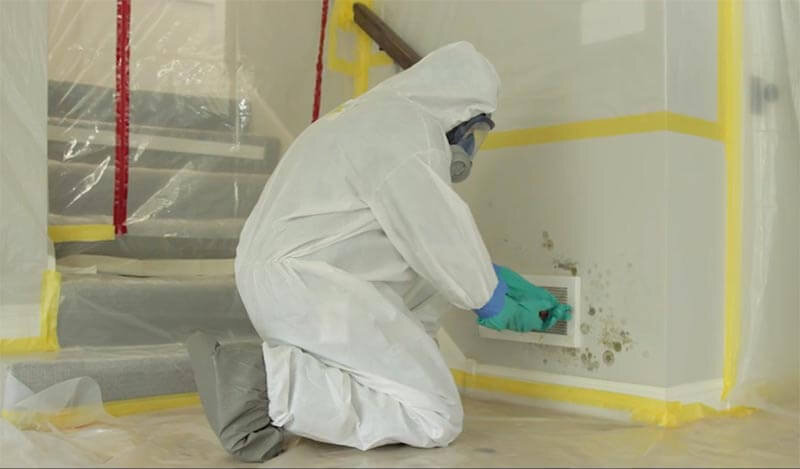Crafting an In-depth Post Mold Remediation Report
Crafting an In-depth Post Mold Remediation Report
Blog Article
Professional Tips for Blog Post Mold And Mildew Removal Success
In the realm of mold and mildew removal, effectively removing mold is just half the fight; the real challenge exists in preventing its reappearance. By adhering to experienced tips and finest methods, individuals can safeguard their areas versus mold resurgence and maintain a healthy and balanced interior environment.
Display Humidity Levels On A Regular Basis
Routine monitoring of moisture levels is important in guaranteeing the efficiency of post mold and mildew removal initiatives. After finishing mold and mildew remediation treatments, keeping optimum humidity levels is essential to avoid mold re-growth and guarantee a healthy interior environment. Monitoring humidity levels permits early discovery of any kind of spikes or fluctuations that can possibly bring about mold renewal. High moisture degrees above 60% create a favorable environment for mold and mildew to prosper, making routine checking an aggressive procedure to avoid any type of future mold and mildew issues - After mold remediation.
In addition, establishing a routine timetable for humidity checks, particularly in risky locations such as kitchens, basements, and shower rooms, is a proactive approach to mold prevention. By regularly keeping track of humidity degrees, home proprietors can properly minimize the threat of mold reoccurrence and maintain a healthy and balanced indoor setting post-remediation.
Conduct Thorough Inspections Post-Remediation
Complying with the completion of mold and mildew remediation treatments, it is critical to carry out extensive evaluations to verify the effectiveness of the removal process. These post-remediation inspections are crucial in making certain that the mold issue has actually been successfully attended to which there is no recurrence or continuing to be mold growth. Examinations ought to be accomplished by qualified experts who have experience in recognizing mold and examining indoor air quality.
Throughout these inspections, numerous techniques such as aesthetic evaluations, air tasting, and surface area tasting might be employed to thoroughly review the remediated locations. Visual assessments include an in-depth inspection of the properties to check for any visible signs of mold and mildew growth or water damage. Air sampling aids in figuring out the airborne mold and mildew spore degrees, while surface tasting can find mold and mildew bits on surface areas.
Implement Proper Ventilation Approaches
After making sure the effectiveness of the mold remediation process through thorough inspections, the next critical action is to concentrate on applying correct air flow strategies. Sufficient air flow is vital in protecting against mold reoccurrence by regulating dampness degrees and advertising air flow.
Proper air flow not only aids in avoiding mold development but likewise adds to the total wellness and convenience of passengers. By guaranteeing appropriate air flow throughout the property, you can reduce the risk of mold over at this website regrowth and develop a much healthier living atmosphere. Routine maintenance of air flow systems, including cleansing and filter replacements, is crucial to sustaining efficient air flow. Consulting with HVAC experts can give additional insights right into enhancing ventilation strategies for your certain residential or commercial property requirements.

Use Mold-Resistant Materials for Repairs
To boost the long-lasting performance of mold remediation initiatives, integrating mold-resistant materials for repair services is essential in minimizing the threat of future mold and mildew development. Mold-resistant products are developed to withstand moisture and prevent mold growth, making them an important selection for locations susceptible to dampness and humidity. When fixing areas influenced by mold and mildew, utilizing materials such as mold-resistant drywall, mold-resistant paints, and mold-resistant caulking can aid stop mold and mildew reappearance.
Mold-resistant drywall is a superb choice to conventional drywall in areas like cellars and washrooms where moisture levels are higher. When exposed to damp conditions, this type of drywall has a special finish that withstands mold and mildew development also. Furthermore, using mold-resistant paints having antimicrobial agents can better prevent you could check here mold and mildew growth on ceilings and wall surfaces.
In locations where moisture prevails, such as bathrooms and cooking areas, using mold-resistant caulking around home windows, bathtubs, and sinks can help seal out water and avoid mold from holding in splits and crevices. By buying these mold-resistant products during repair work post-remediation, you can considerably reduce the possibility of future mold issues and preserve a much healthier interior setting.
Maintain Sanitation and Address Water Issues
After mold and mildew remediation, it is critical to preserve a tidy setting to protect against the regrowth of mold. Leakages, water invasion, or high humidity degrees can create the ideal reproduction ground for mold, so it is essential to fix any type of water-related problems promptly.
To preserve sanitation, take into consideration using HEPA filters in vacuums and air purifiers to catch mold and mildew spores and prevent their blood circulation airborne. Ensuring appropriate air flow in locations vulnerable to moisture accumulation, such as kitchens and washrooms, can help maintain moisture degrees in check. By remaining vigilant about tidiness and addressing water concerns promptly, you can efficiently prevent mold reinfestation and keep a healthy indoor atmosphere.
Conclusion

In the world of mold and mildew removal, effectively removing mold and mildew is only half the battle; the true challenge lies in stopping its reappearance. After finishing mold removal treatments, preserving optimum humidity degrees is critical to avoid mold and mildew re-growth and guarantee a healthy and balanced indoor setting. High moisture degrees over 60% produce a conducive setting for mold and mildew to thrive, making normal keeping an eye on a positive measure to avoid any future mold concerns.
To boost the lasting effectiveness of mold remediation initiatives, including mold-resistant materials for repair work is critical in minimizing the risk of future mold and mildew growth. After mold and mildew remediation, it is crucial to preserve a clean setting important link to protect against the regrowth of mold and mildew.
Report this page